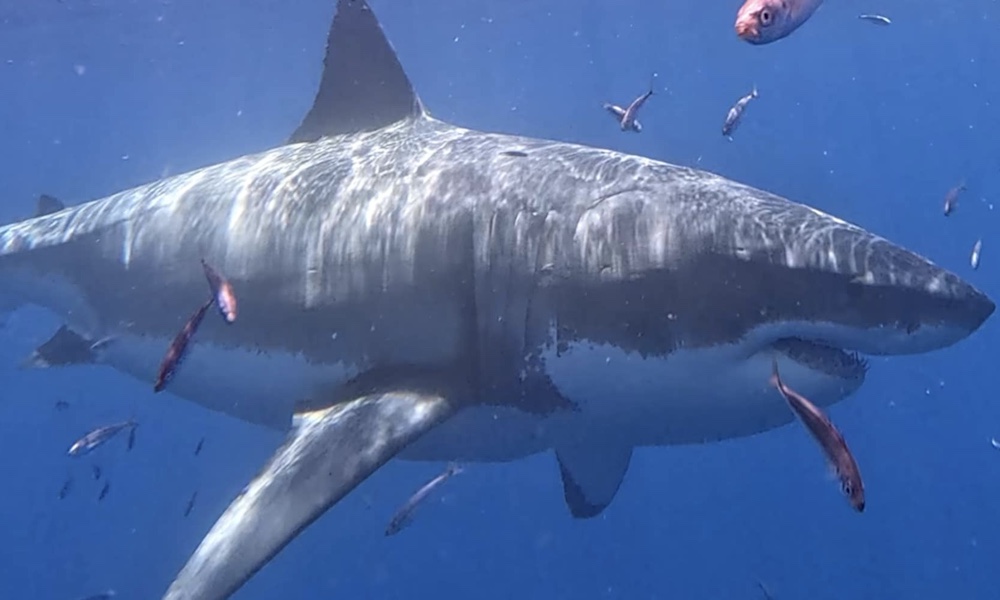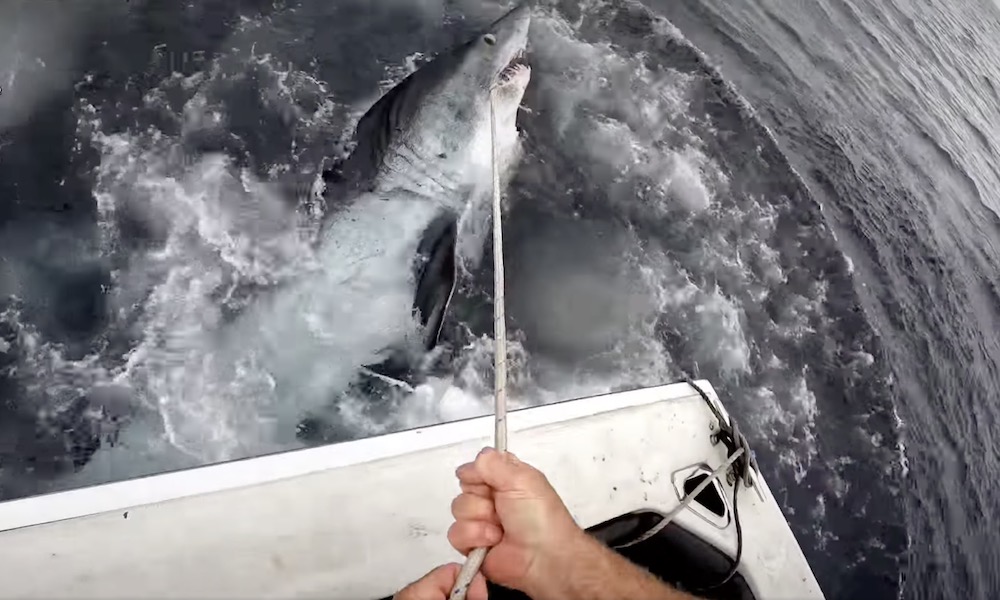Somewhere off Southern California, presumably, is a massive great white shark with ties to L.A. but with an island-themed name.
Meet Catalina. She measures perhaps 18 feet and loves to snack on blubbery seals and sea lions.
The top-line predator, featured in the accompanying footage, was photographed Aug. 11 by Keith Poe, who tags sharks for the Marine Conservation Science Institute.
Poe “chummed up” the shark midway between Palos Verdes and Santa Catalina Island a day after a 51-foot fin whale washed ashore and died on Torrance Beach.
Poe had intended to follow L.A. County lifeguards deep into and perhaps beyond the San Pedro Channel, where they planned to deposit the whale carcass.

But the carcass began to sink shortly after it was towed off the beach and lifeguards cut it loose about two miles offshore.
“When the whale sank I just went offshore to chum for mako sharks,” Poe said. “And then that girl showed up.”
On Thursday, Poe introduced “that girl” as the newly documented white shark, Catalina.

“I named her Catalina because she’s a beautiful shark and it’s a beautiful name, and because she was on that side of the channel,” Poe told FTW Outdoors.
His footage shows Catalina swimming gracefully and seemingly effortlessly near the surface in the outer channel.
The footage also inspired Poe’s friend, Paul McPhee, to create the accompanying artwork.

“She was unknown [to science] and added to the [MCSI] California database,” Poe stated Thursday on Facebook. “Paul was able to capture her size and beauty in this beautiful piece of art. Refections from the sun produced the copper hues you see.”
As of late Saturday there remained no sign of the fin whale carcass. Some people half-expected it to eventually float to the surface.






